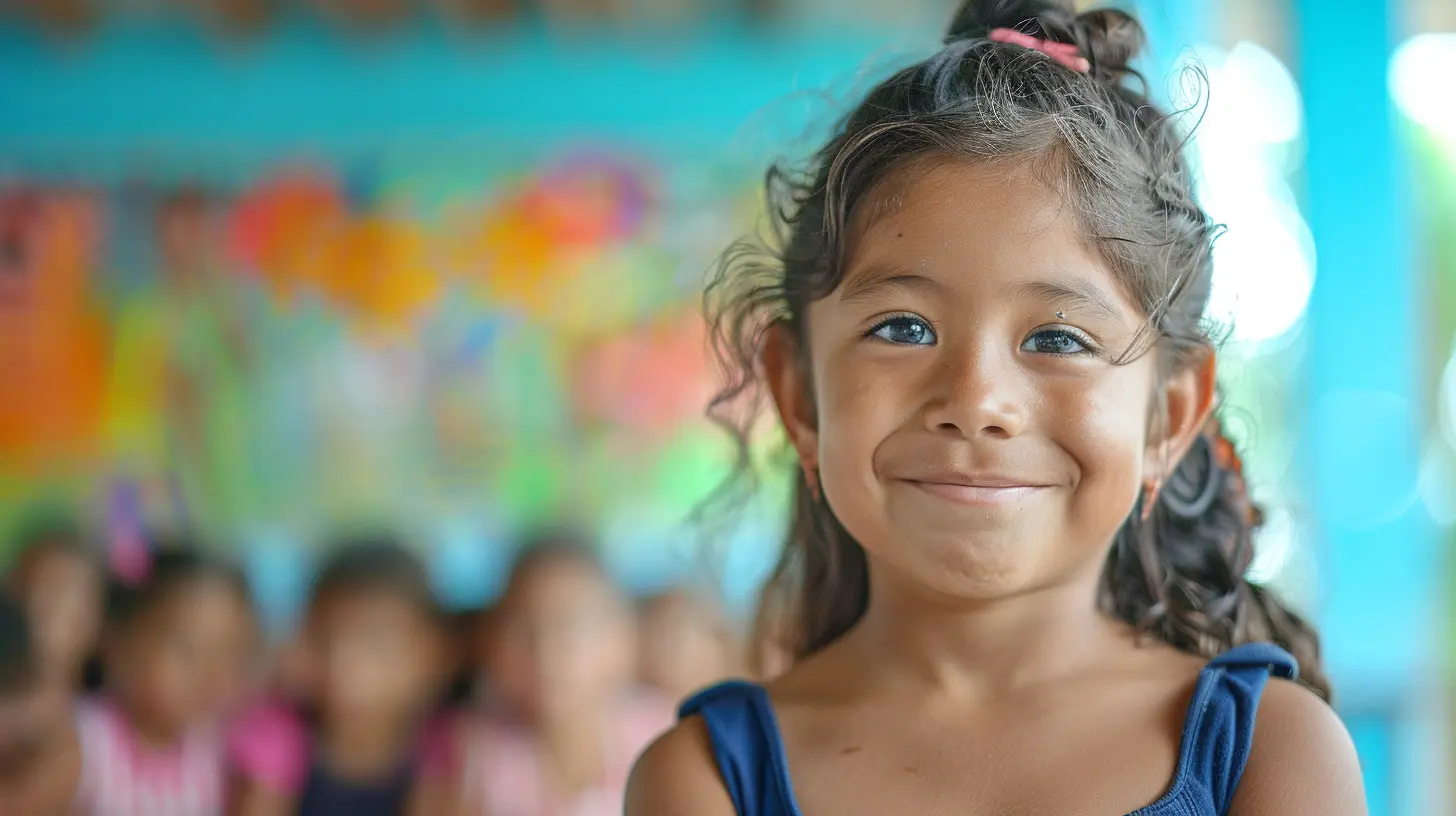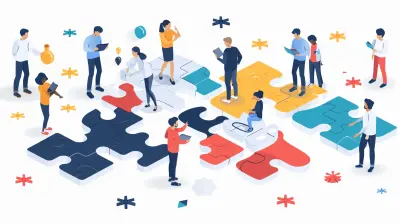How to Overcome Challenges in Implementing Bilingual Programs
11 February 2025
Bilingual programs are more than just a trend in modern education—they're a necessity in an increasingly globalized world. These programs give students the tools they need to communicate across cultures and borders, opening up a world of opportunities. However, while the benefits are undeniable, the path to implementing bilingual programs is fraught with challenges.
In this article, we'll dive deep into the common hurdles schools face when implementing bilingual programs and, more importantly, how to overcome them. Whether you're an educator, school administrator, or an interested parent, this guide will provide you with actionable insights to make bilingual education a reality.

Why Bilingual Programs Matter
Before we get into the challenges, let’s take a moment to reflect on why bilingual education is so important. In today’s interconnected world, being able to speak more than one language can be a game-changer. It’s not just about being able to travel more easily or order food in a foreign country—it’s about opening doors to new cultures, perspectives, and, yes, job opportunities.Research consistently shows that bilingual education enhances cognitive skills, improves problem-solving abilities, and even delays the onset of dementia. It’s like giving students a key to unlock a whole new world. But, as with anything worth pursuing, it doesn’t come without its challenges.

The Common Challenges in Implementing Bilingual Programs

1. Lack of Qualified Teachers
One of the biggest roadblocks? Finding qualified teachers who are not only proficient in both languages but also trained in bilingual education methods. Let’s be honest—just because someone speaks two languages doesn’t automatically mean they can teach in both.In many areas, especially rural or underserved communities, there simply aren't enough bilingual teachers to go around. And even in urban settings, the demand often outweighs the supply.
How to Overcome It:
- Invest in Teacher Training: Schools need to offer professional development opportunities that focus specifically on bilingual education methods. This could include workshops, certifications, or even partnerships with universities.- Collaboration and Mentoring: Pair up less experienced bilingual teachers with seasoned educators who can offer guidance and mentorship.
- Recruit Internationally: Schools might consider recruiting from other countries where bilingual education is more common. While this requires navigating visa paperwork, it can be a long-term solution to the teacher shortage.
2. Limited Resources and Materials
Another common challenge is the lack of bilingual resources—textbooks, instructional materials, and even digital content. Many schools are still grappling with how to provide sufficient materials in both languages.How to Overcome It:
- Create Your Own Materials: While this may sound daunting, many educators have taken the initiative to develop their own bilingual resources. Collaborative platforms like Teachers Pay Teachers allow educators to share and sell their custom-created materials.- Utilize Digital Resources: There are many free or low-cost online platforms that offer bilingual educational content. Websites like Duolingo, Khan Academy, and various language learning apps can supplement traditional teaching materials.
- Leverage Community Resources: Many communities have cultural centers or organizations that provide educational resources in multiple languages. Schools can partner with these organizations to access materials or even bring in guest speakers for authentic language experiences.
3. Balancing Two Languages
Finding the right balance between the two languages being taught can be tricky. Should instruction be split 50/50? Should one language take priority over the other? And then, there’s the question of ensuring students don’t fall behind in core subjects while learning in two languages.How to Overcome It:
- Adopt a Flexible Approach: Bilingual education doesn’t have to be a strict 50/50 split. Some schools opt for a “transitional” model where students start with more instruction in their native language and gradually increase instruction in the target language. Others use an “immersion” model, where one language (usually the second language) is used for most instruction.- Language Alternation by Subject: In some bilingual programs, certain subjects are taught in one language, while others are taught in the second language. For example, math could be taught in English, while science is taught in Spanish. This ensures that students are exposed to both languages in meaningful, content-rich ways.
- Frequent Assessment: Regular assessments can help ensure that students are progressing in both languages and in their overall academic performance. Data-driven instruction allows teachers to adjust their methods as needed.
4. Parental Concerns and Involvement
Parents play a crucial role in their children’s education, but not all parents are on board with bilingual programs. Some may worry that their child will fall behind in the dominant language (usually English in the U.S.) or that learning two languages at once might confuse them.How to Overcome It:
- Education and Communication: Schools need to communicate the benefits of bilingual education to parents. Hosting informational sessions, distributing research-backed literature, and even having current bilingual students (or their parents) share success stories can help alleviate concerns.- Involve Parents in the Process: Encourage parents to be involved in their children’s bilingual education. This could be as simple as encouraging them to speak the second language at home, or as involved as hosting bilingual family nights where parents and children engage in fun, language-based activities.
5. Cultural Integration
Bilingual education isn’t just about learning a second language—it’s also about embracing different cultures. However, some schools may struggle to integrate cultural elements into their programs, which can lead to a lack of engagement or even resistance.How to Overcome It:
- Celebrate Cultural Diversity: Schools can host cultural celebrations, potlucks, or “international days” where students and their families share traditions, foods, and stories from their respective cultures.- Curriculum Integration: Instead of treating culture as an “extra,” it should be seamlessly integrated into the curriculum. For example, literature classes could include books by authors from different cultural backgrounds, and social studies lessons could explore history from a global perspective.
- Fostering an Inclusive Environment: Schools must create an environment where all languages and cultures are valued equally. This means ensuring that signage, communication, and interactions reflect a respect for both languages being taught.
6. Budget Constraints
Let’s face it—money is often the elephant in the room. Implementing bilingual programs can be expensive. From hiring specialized teachers to purchasing bilingual materials, the costs can add up quickly, especially for schools already facing budget cuts.How to Overcome It:
- Seek Grants and Funding: There are numerous grants and funding opportunities specifically aimed at supporting bilingual education. Schools should actively seek out these opportunities, whether from the government, private foundations, or community organizations.- Crowdsourcing and Donations: Platforms like DonorsChoose allow teachers to raise funds for specific classroom needs, including bilingual materials and resources.
- Prioritize Spending: While it’s tempting to go all-in with flashy new resources, schools need to be strategic about where they allocate their funds. Focus on what will have the most significant impact—whether that’s hiring an extra bilingual teacher or investing in high-quality digital resources.
7. Student Resistance and Motivation
Not every student is going to be excited about learning a second language. Some might feel overwhelmed, while others might not see the value in it. Keeping students motivated in a bilingual program can be a real challenge.How to Overcome It:
- Make Learning Fun: Language learning doesn’t have to be a chore. Incorporate games, creative projects, and technology to make bilingual education engaging and interactive.- Connect Language Learning to Real-Life Benefits: Help students understand the practical applications of being bilingual. Whether it’s through guest speakers who use their language skills in their careers or showcasing how being bilingual can open up travel opportunities, show students the real-world value of what they’re learning.
- Use Peer Support: Pairing students with “language buddies” can help build a sense of community and mutual support. When students see their peers succeeding in bilingual education, they’re more likely to stay motivated.

Wrapping Up
Implementing bilingual programs is no easy feat, but with the right strategies, schools can overcome these challenges and provide students with the lifelong benefits of bilingualism. It’s all about finding the right balance, investing in the right resources, and fostering an environment that values both languages and cultures.Yes, there will be bumps along the way, but the rewards far outweigh the hurdles. After all, learning a second language is like unlocking a new superpower. It gives students the ability to connect with the world in ways they never thought possible. And that’s a gift worth fighting for.
all images in this post were generated using AI tools
Category:
Bilingual EducationAuthor:

Monica O`Neal
Discussion
rate this article
17 comments
Yolanda McPhail
This article offers valuable insights into navigating the complexities of bilingual program implementation. By emphasizing community involvement, continuous teacher training, and adaptive curriculum strategies, it equips educators with practical tools to foster effective bilingual environments. Addressing challenges head-on ensures a more inclusive and enriching experience for all students.
March 28, 2025 at 7:50 PM

Monica O`Neal
Thank you for your thoughtful feedback! I’m glad you found the insights on community involvement and teacher training valuable for fostering effective bilingual programs.
Natalia Sanders
Embrace the journey! Every challenge in implementing bilingual programs is a stepping stone to success. With creativity, patience, and teamwork, you’ll inspire a world of learners—let’s tackle it together!
March 17, 2025 at 9:47 PM

Monica O`Neal
Thank you! Absolutely, embracing challenges as growth opportunities is key. Together, we can inspire and empower learners through effective bilingual programs!
Wren Lawrence
This article provides valuable insights into overcoming the challenges of implementing bilingual programs. Practical strategies and real-world examples make it a must-read for educators seeking effective solutions. Great resource!
March 5, 2025 at 11:18 AM

Monica O`Neal
Thank you for your kind words! I'm glad you found the article helpful for educators implementing bilingual programs.
Felicity Frye
Great insights! Bilingual programs can be truly rewarding!
March 5, 2025 at 5:37 AM

Monica O`Neal
Thank you! I'm glad you found the insights valuable. Bilingual programs indeed offer many rewards despite the challenges.
Nix Gibson
Great insights! Excited to see bilingual programs thrive!
March 2, 2025 at 3:30 AM

Monica O`Neal
Thank you! I'm excited too and hopeful for the positive impact of bilingual programs!
Mila Lewis
This article effectively highlights key strategies for overcoming challenges in bilingual program implementation. By emphasizing collaboration among educators, cultural sensitivity, and adaptive curriculum design, it provides a comprehensive framework for fostering successful bilingual education initiatives.
March 1, 2025 at 3:58 AM

Monica O`Neal
Thank you for your insightful comment! I'm glad you found the strategies for collaboration, cultural sensitivity, and adaptive curriculum design helpful for successful bilingual program implementation.
Reece McConkey
Implementing bilingual programs requires clear communication, ongoing training, and community support. Focus on collaboration among educators, parents, and students to effectively address challenges and enhance learning outcomes.
February 28, 2025 at 9:46 PM

Monica O`Neal
Thank you for your insightful comment! I completely agree that collaboration and clear communication are essential for the success of bilingual programs. Together, we can create a supportive environment that enhances learning outcomes for all students.
Uriah Reyes
Embracing the journey of implementing bilingual programs can transform challenges into growth opportunities. With passion, collaboration, and creativity, every hurdle becomes a stepping stone toward enriching our education systems and empowering diverse learners. Keep pushing forward!
February 28, 2025 at 11:28 AM

Monica O`Neal
Thank you for your insightful comment! I completely agree that with passion and collaboration, we can turn challenges into valuable growth opportunities in bilingual education. Let's keep striving for progress together!
Pamela McDermott
Implementing bilingual programs isn't just a challenge—it's a fabulous opportunity! Embrace the chaos, turn hurdles into stepping stones, and watch your students thrive like never before!
February 24, 2025 at 1:30 PM

Monica O`Neal
Absolutely! Embracing the challenges of bilingual programs can lead to incredible growth and success for both students and educators. Let’s turn those hurdles into valuable learning experiences!
Nadia McBride
Great tips! Bilingual programs can be tough, but so rewarding!
February 21, 2025 at 7:20 PM

Monica O`Neal
Thank you! I’m glad you found the tips helpful. Bilingual programs definitely come with challenges, but the rewards make it worthwhile!
Lyla Sullivan
Implementing bilingual programs is challenging but essential. Embrace innovative strategies, prioritize collaboration, and maintain unwavering commitment. Success is achievable when we focus on clear goals and community support.
February 18, 2025 at 8:00 PM

Monica O`Neal
Thank you for your insightful comment! I completely agree that innovative strategies, collaboration, and community support are key to successfully implementing bilingual programs. Your emphasis on clear goals resonates well with our findings.
Stephen McTier
Implementing bilingual programs is crucial for fostering inclusivity and enhancing cognitive skills. Embrace challenges as opportunities for growth. With strategic planning, community involvement, and ongoing training, success is not just possible—it's inevitable. Let's prioritize effective bilingual education for all learners!
February 18, 2025 at 11:25 AM

Monica O`Neal
Thank you for your insightful comment! I completely agree—strategic planning and community engagement are key to making bilingual programs successful and inclusive for all learners.
Morrow McWilliams
This article offers valuable insights into overcoming the complexities of bilingual program implementation. Practical strategies are essential for educators to navigate challenges and create effective, inclusive learning environments.
February 17, 2025 at 1:11 PM

Monica O`Neal
Thank you for your feedback! I'm glad you found the insights and strategies helpful for navigating the complexities of bilingual program implementation.
Kendra McAlister
Implementing bilingual programs requires careful planning, robust training, and consistent community engagement. Addressing potential cultural and logistical challenges early on fosters a supportive environment for effective language acquisition.
February 17, 2025 at 3:21 AM

Monica O`Neal
Thank you for your insightful comment! You’re absolutely right—strategic planning and community involvement are crucial for successful bilingual program implementation.
Thalyn McAdams
Focus on teacher training, community engagement, and adaptive resources to effectively overcome bilingual program challenges.
February 15, 2025 at 5:10 AM

Monica O`Neal
Thank you for your insightful comment! I completely agree that prioritizing teacher training, community engagement, and adaptive resources is essential for successfully navigating the challenges of bilingual program implementation.
Siena Coleman
Great insights on bilingual program implementation! It's essential to address challenges with creativity and collaboration. Looking forward to seeing how these strategies can make a difference!
February 12, 2025 at 12:50 PM

Monica O`Neal
Thank you! I'm glad you found the insights helpful. Collaboration and creativity are indeed key to overcoming these challenges!
Selina Henson
Sure, implementing bilingual programs can be a challenge, but let’s not kid ourselves. With the right mindset, it’s more about willpower than roadblocks. It’s time to stop whining and start winning! Embrace the chaos and watch your students thrive—because bilingualism isn’t just an option; it’s a necessity!
February 11, 2025 at 12:25 PM

Monica O`Neal
Absolutely! With determination and a positive approach, we can turn challenges into opportunities, fostering an environment where bilingualism flourishes. Let's focus on solutions and empower our students to thrive!
MORE POSTS

How to Transition from Traditional to Online Learning Successfully

STEM for All: Creating Inclusive Learning Environments for Diverse Learners

Understanding ADHD in the Classroom: Practical Tips for Teachers

How Continuing Education Can Transform Your Career Path

How to Bring Real-World Engineering into the Classroom

How to Create a Personalized Continuing Education Plan

How to Handle Group Work in Remote Learning

Understanding the Importance of Extracurricular Activities for College Admissions

The Role of Education Policy in Combating Systemic Racism

Exploring the Intersection of Technology and Continuing Education

Building a Productive Study Space for Online Learning